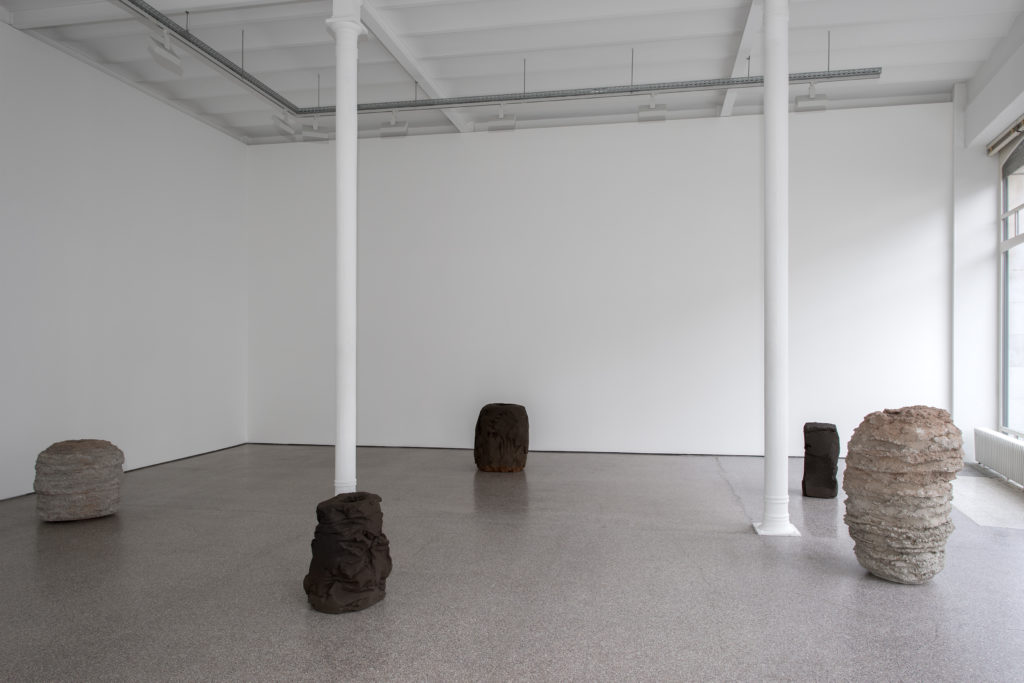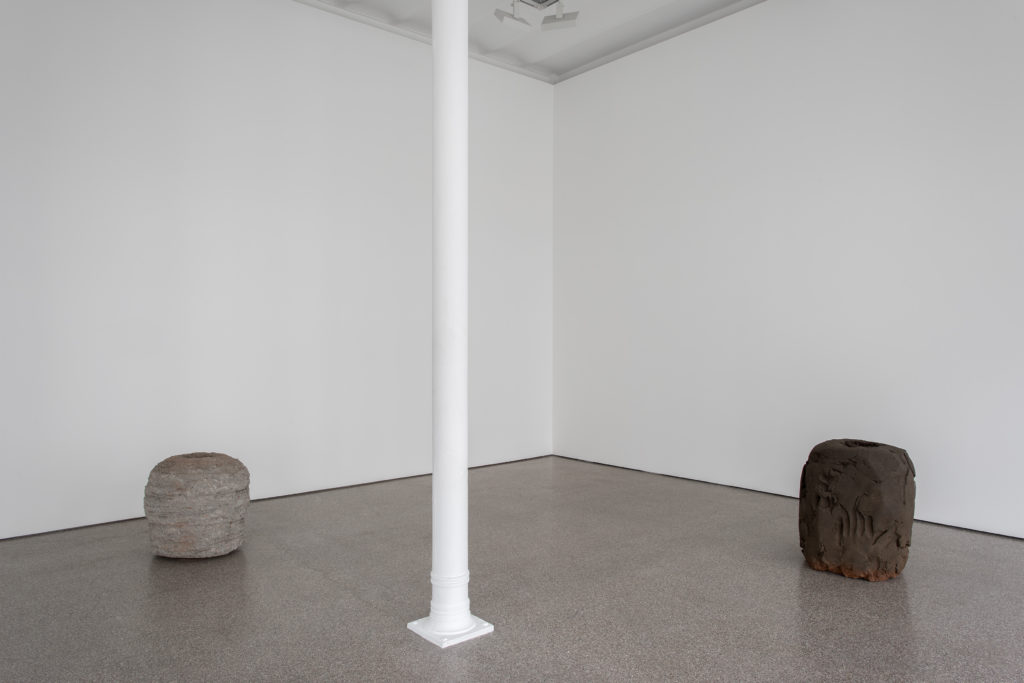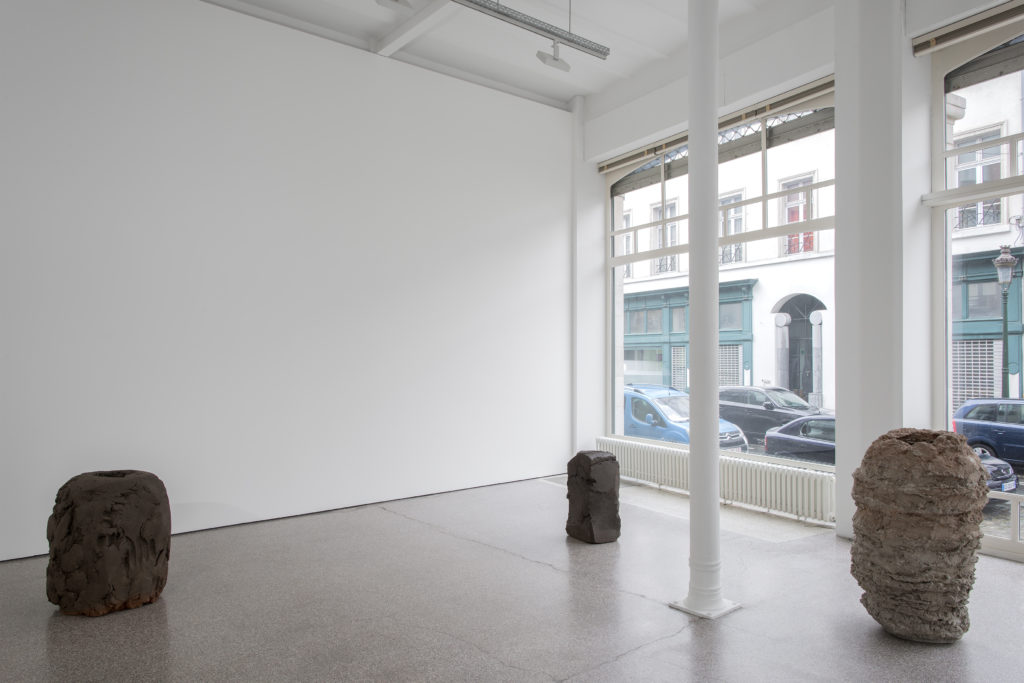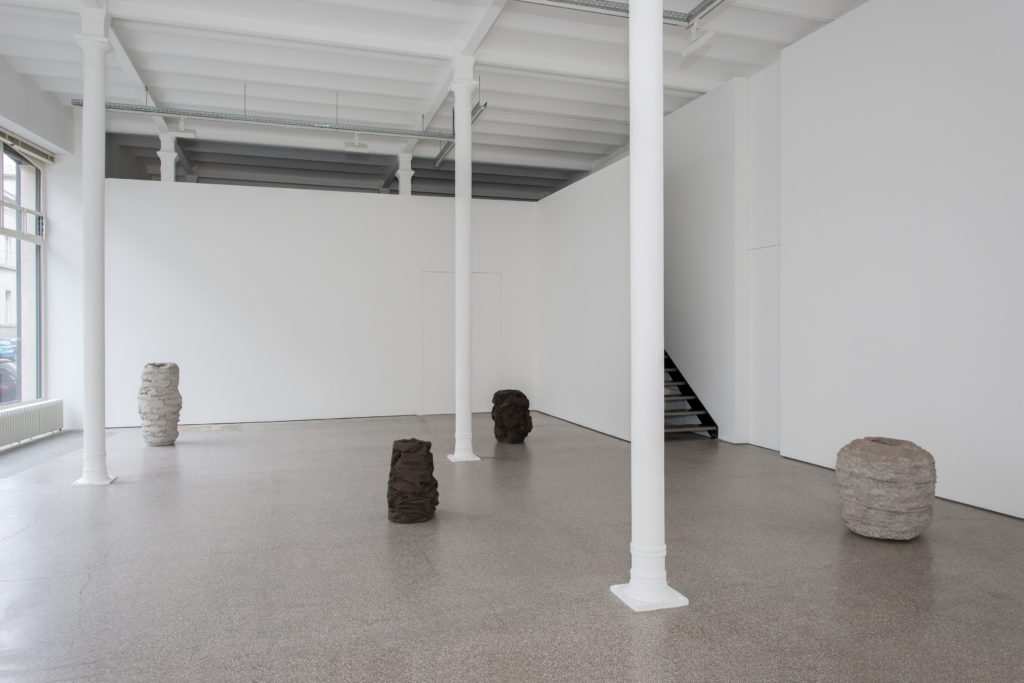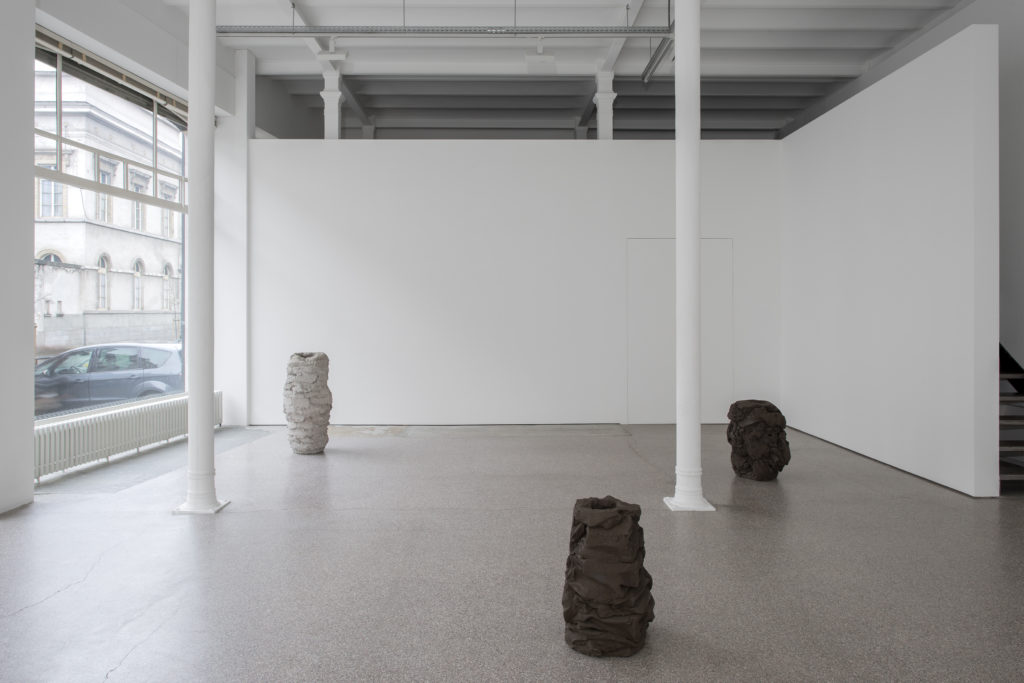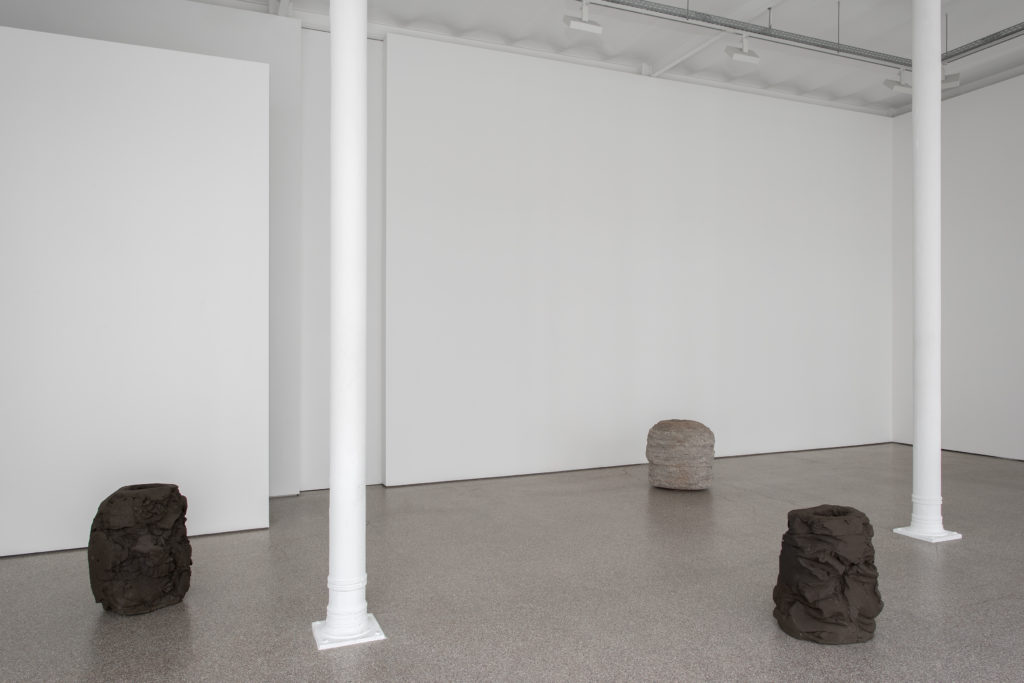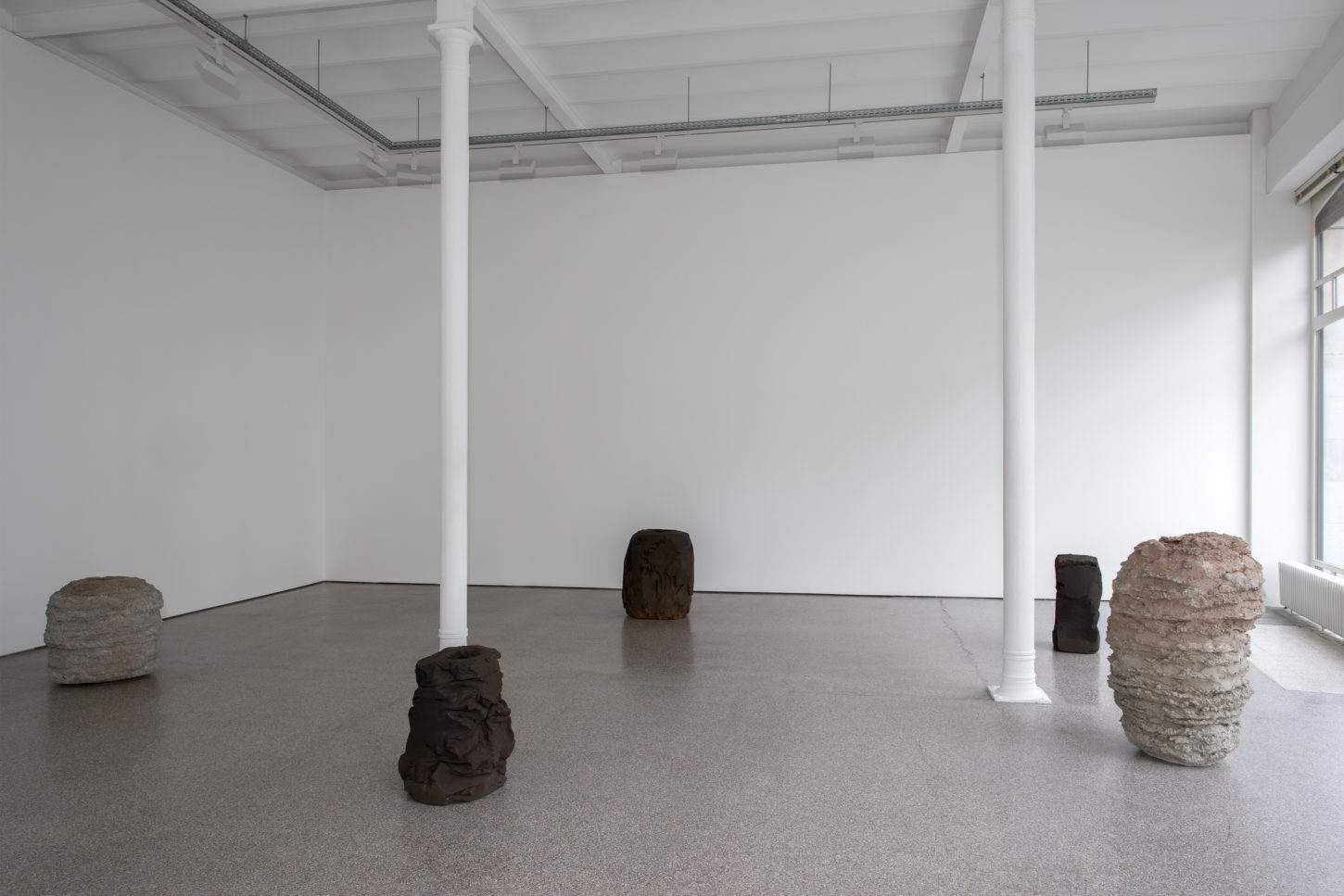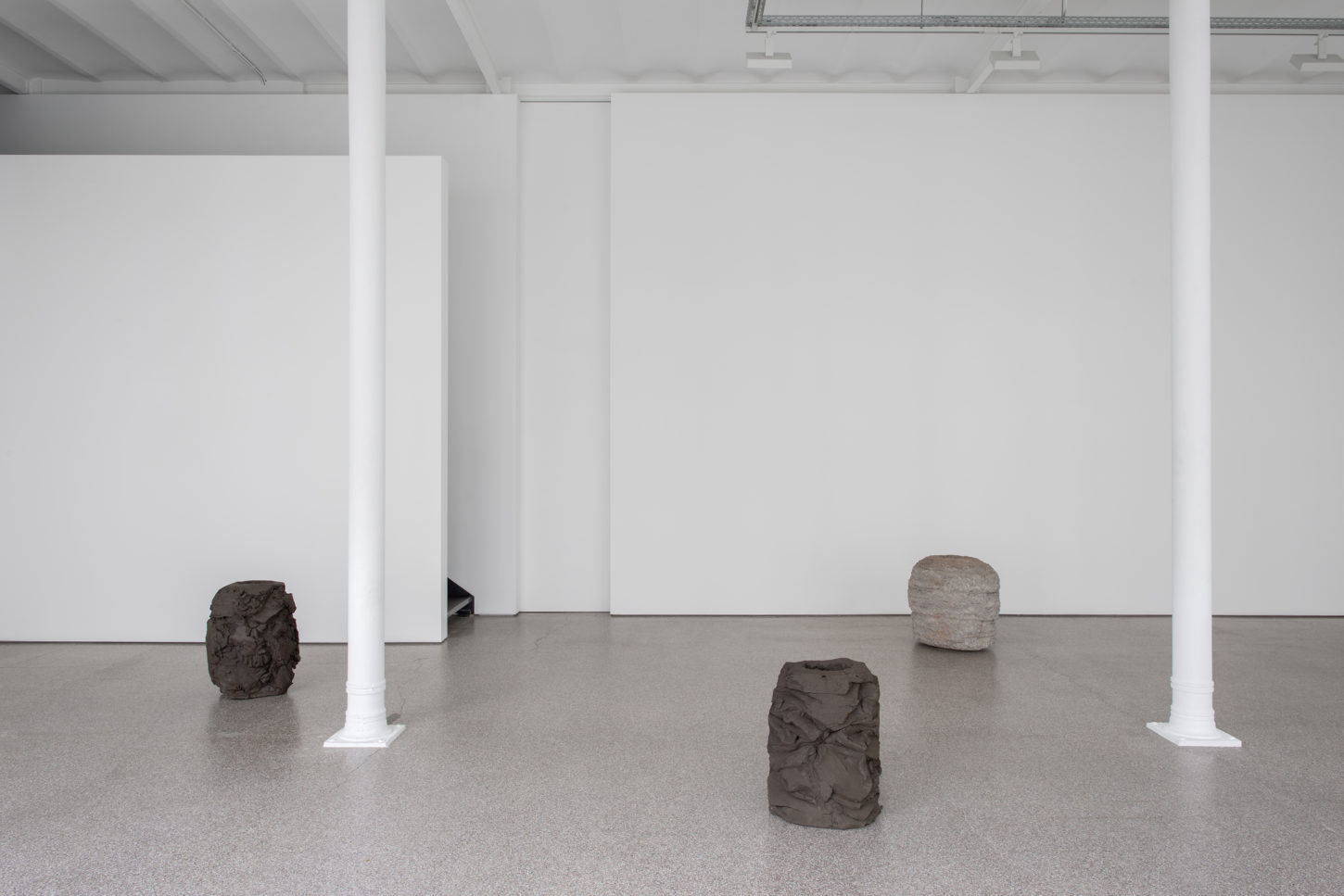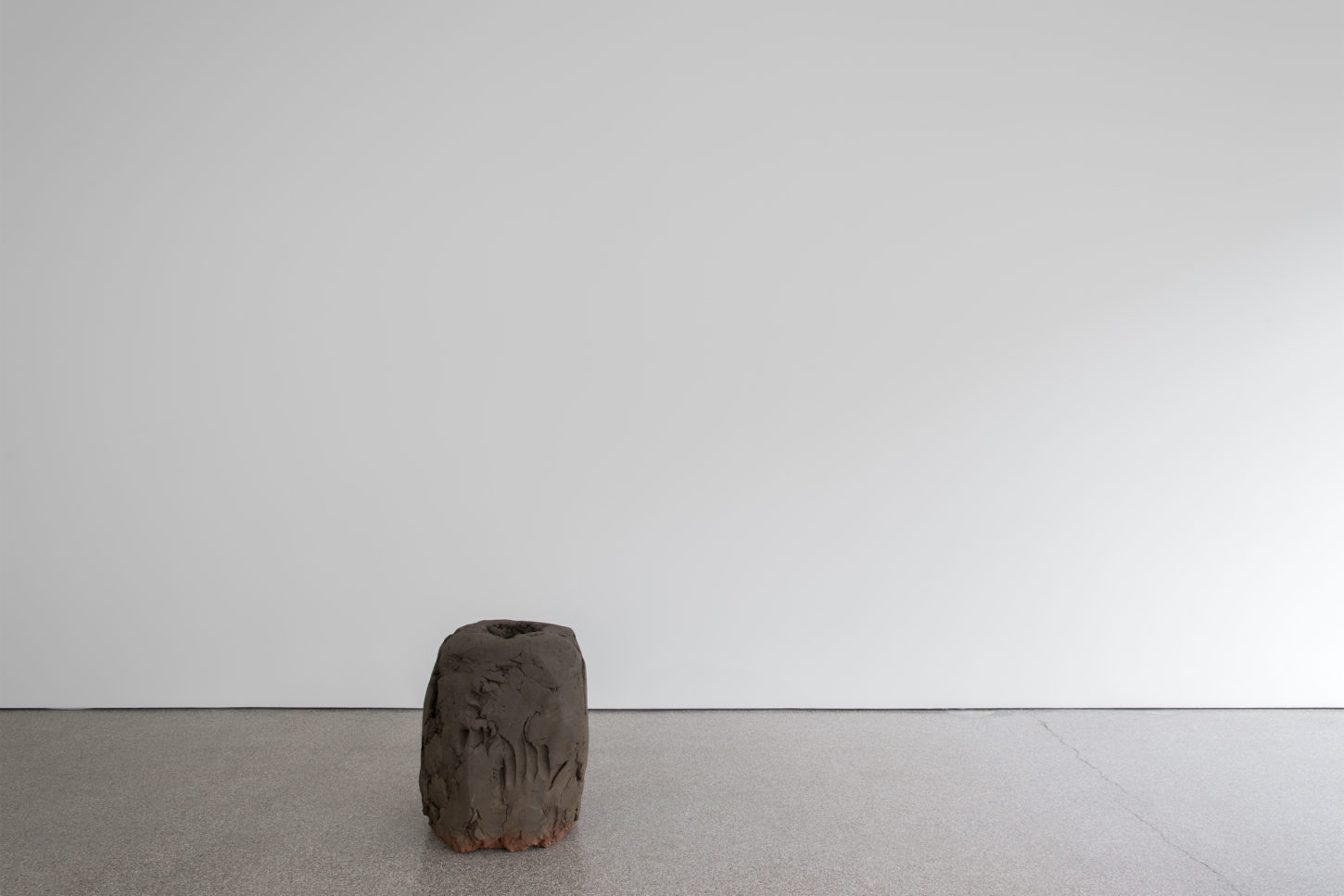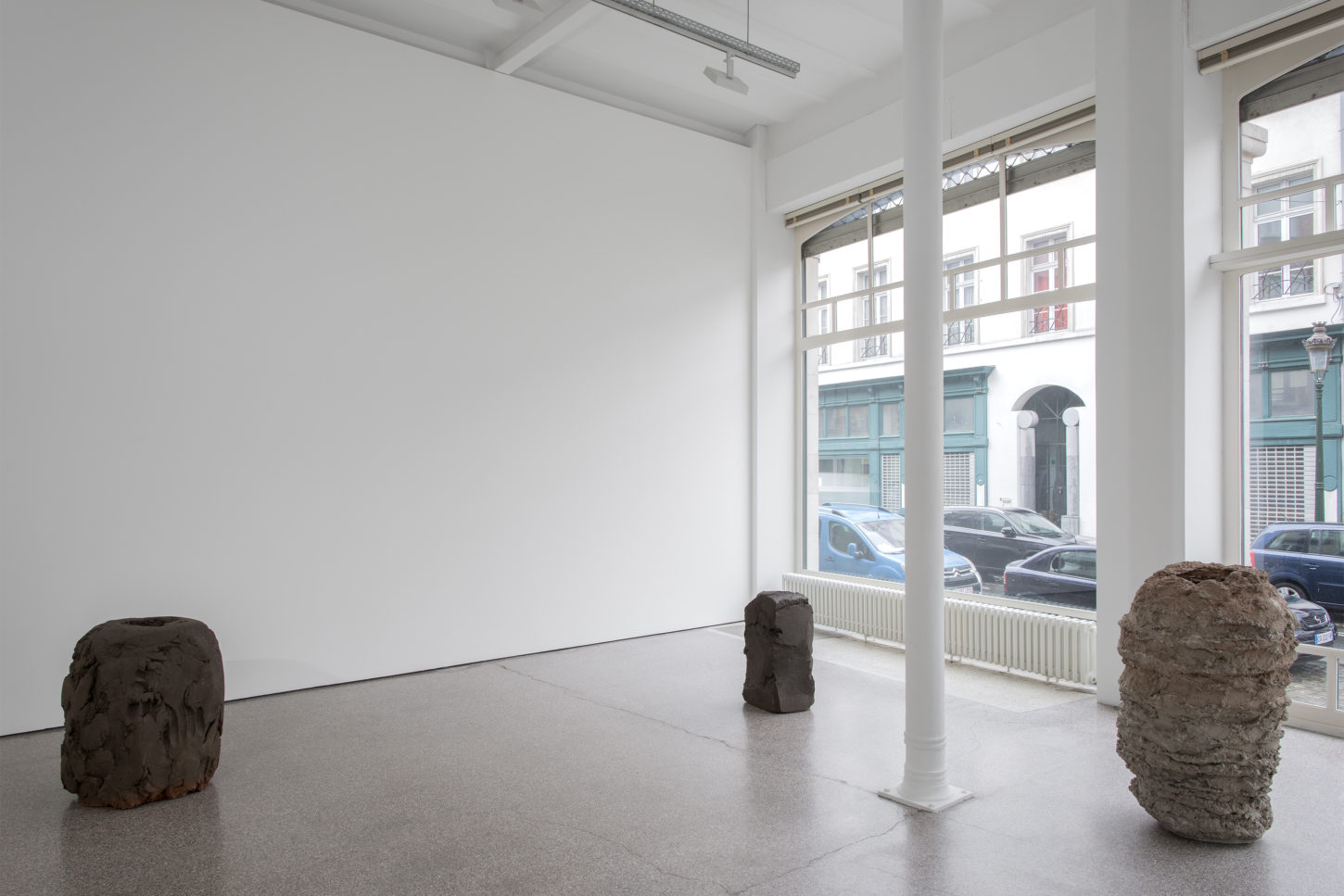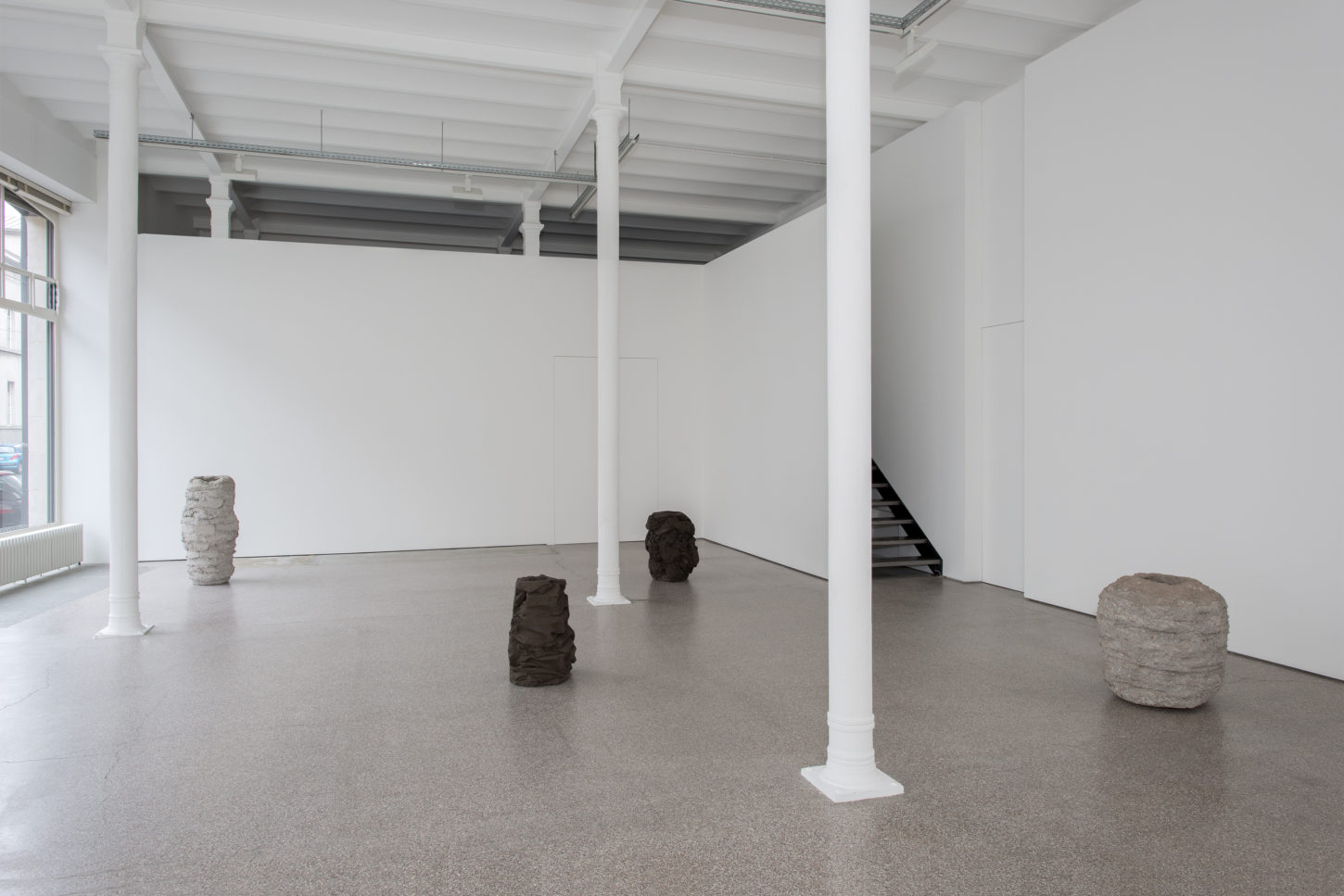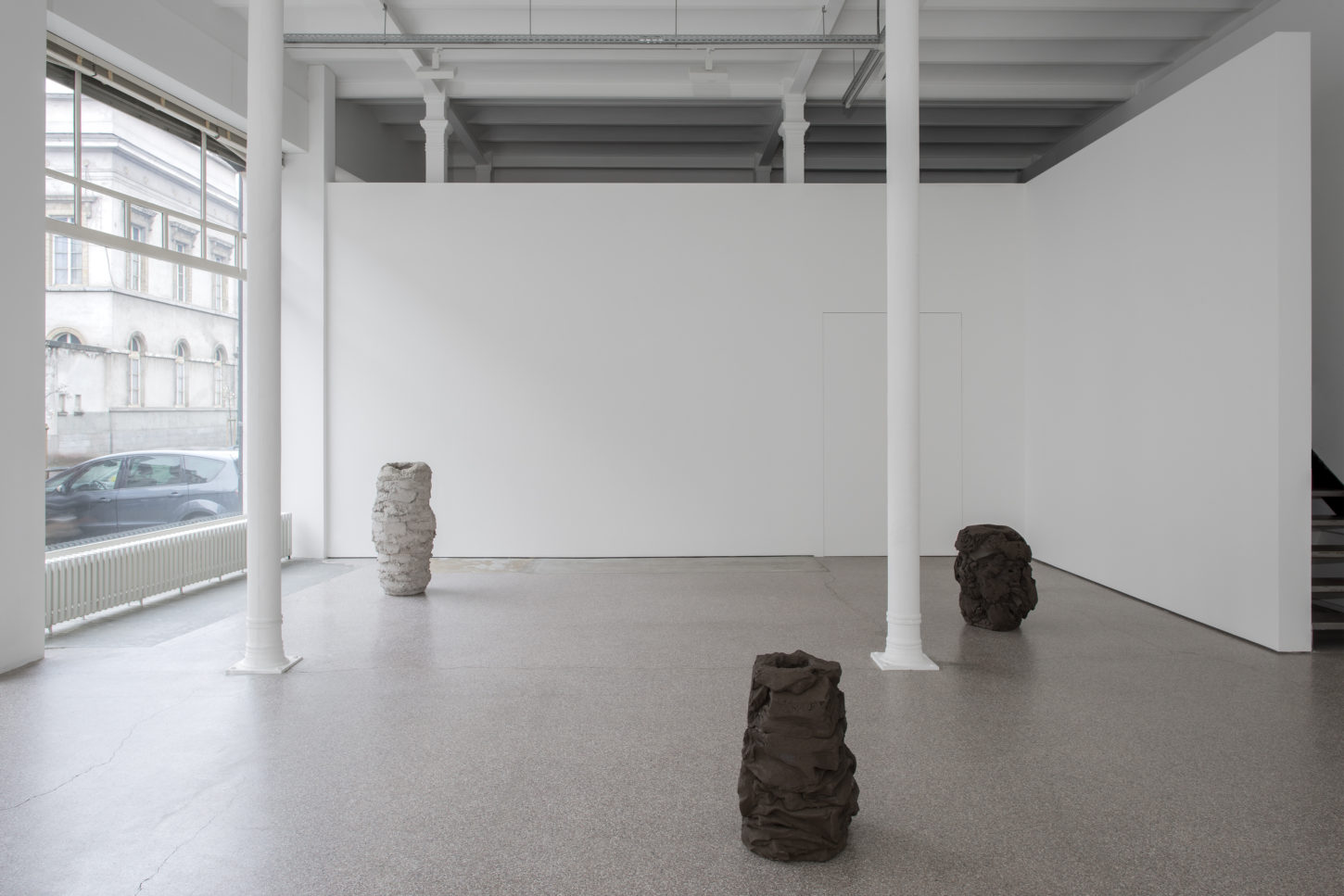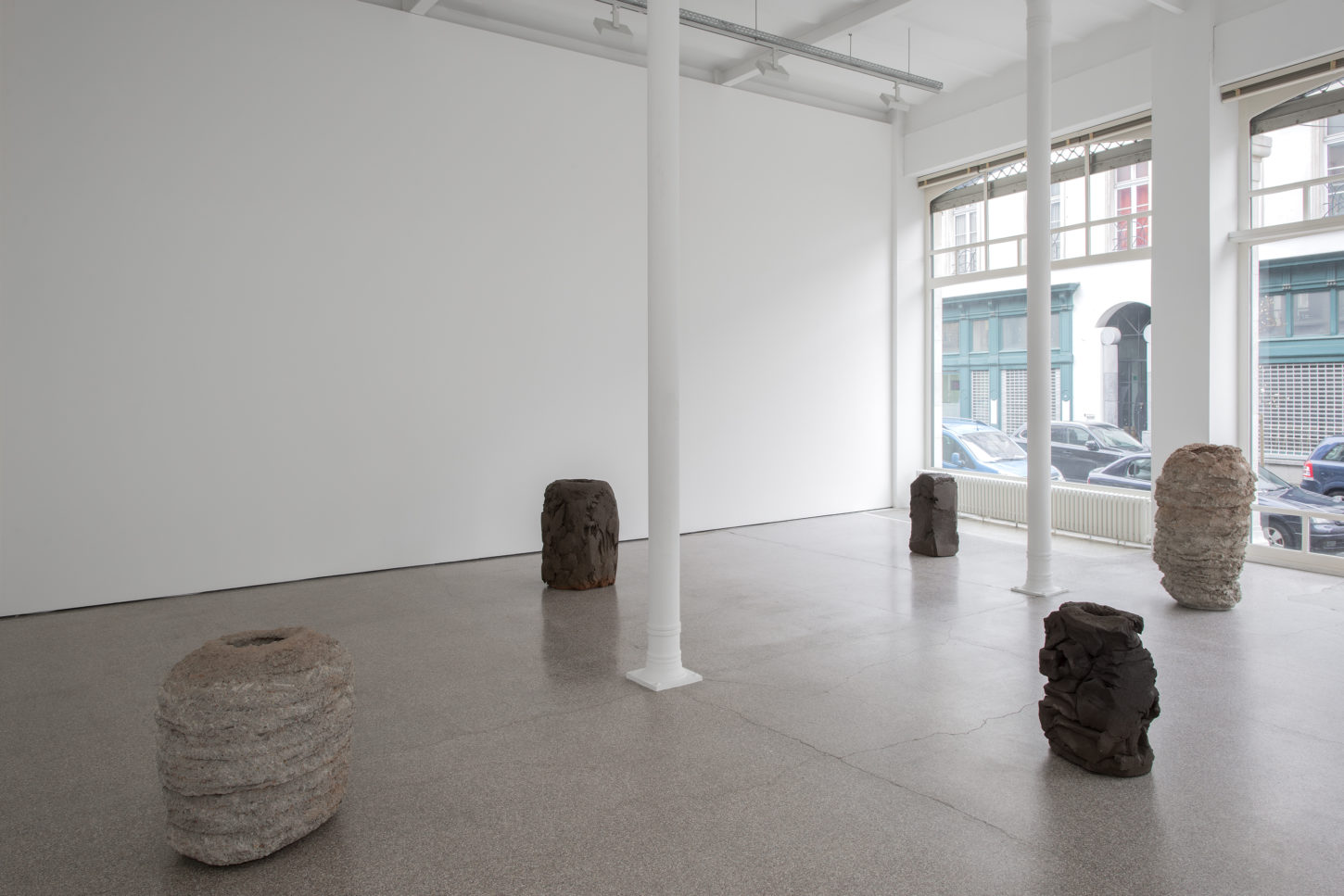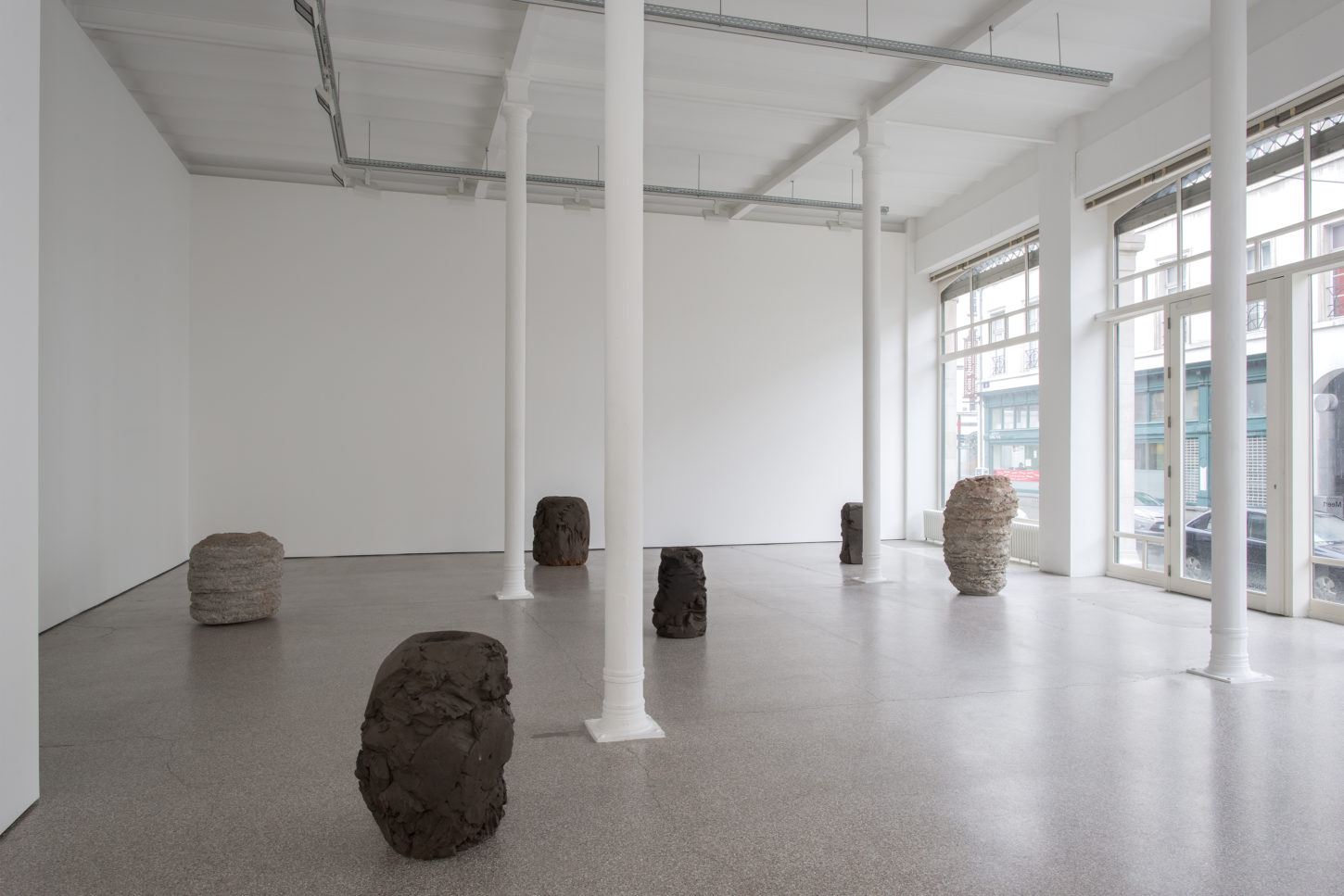Press Release
Espers’ work is concerned with strategies of presentation and contextualisation in artistic practices. His sculptures seem to resist any form of definite categorisation and balance on art’s self-imposed boundaries. The materials and sculptural processes serve this intended ambivalence, objects may not just be what they seem.
On display in the gallery are two series of monolithic forms from 2015. The ceramic pieces are hand modelled: a solid body of clay is hollowed out by the artist, dried and fired in an industrial kiln. The concrete pieces on the other hand are moulded: in a very direct, yet unorthodox way derived from improvised rustic construction techniques, cast and sculpture are build simultaneously, leaving the actual gestalt of the sculpture unpredictable and hidden throughout the process until it gets revealed in a final step.
Technique is closely entwined with the conceptual outset of these works. The ceramic pieces allow a more visually controlled process; limitless changes can be made. Whereas the final form of the concrete pieces can not be anticipated, creative control and thus authorship is downplayed in favour of chance and accident. Hollowing out the ceramics comes out of a technical necessity and puts them in a familiar context, however the hollow form of the concrete works is more deliberate. Both types flirt with a reminiscence of functionality, strange to artistic objects. These spectra of sculptural choices raise fundamental questions about the status as an artwork and how this might constitute.
Repeatedly, the artist challenges our habitual perception. It could be a vase, but it is not necessarily one, an archeological artefact or vessel might also come to mind. Both are legitimate points of view among others. The ‘act of labelling’ is trivial to the comprehension of these sculptures. As indicated in the title of the exhibition, the works remain ‘untitled’, since they do not contain any specific reverence, nor was any attributed to them by the artist.
Espers’ oeuvre is composed of a series of formal typologies that offer an alternative to conventional artistic categories. He creates a perceptive space where the spectator is invited to semiotic analysis, his reflection is just as much part of the process of ‘becoming art’ as the works themselves. Whether they finally resemble anything or not, is no longer relevant.
